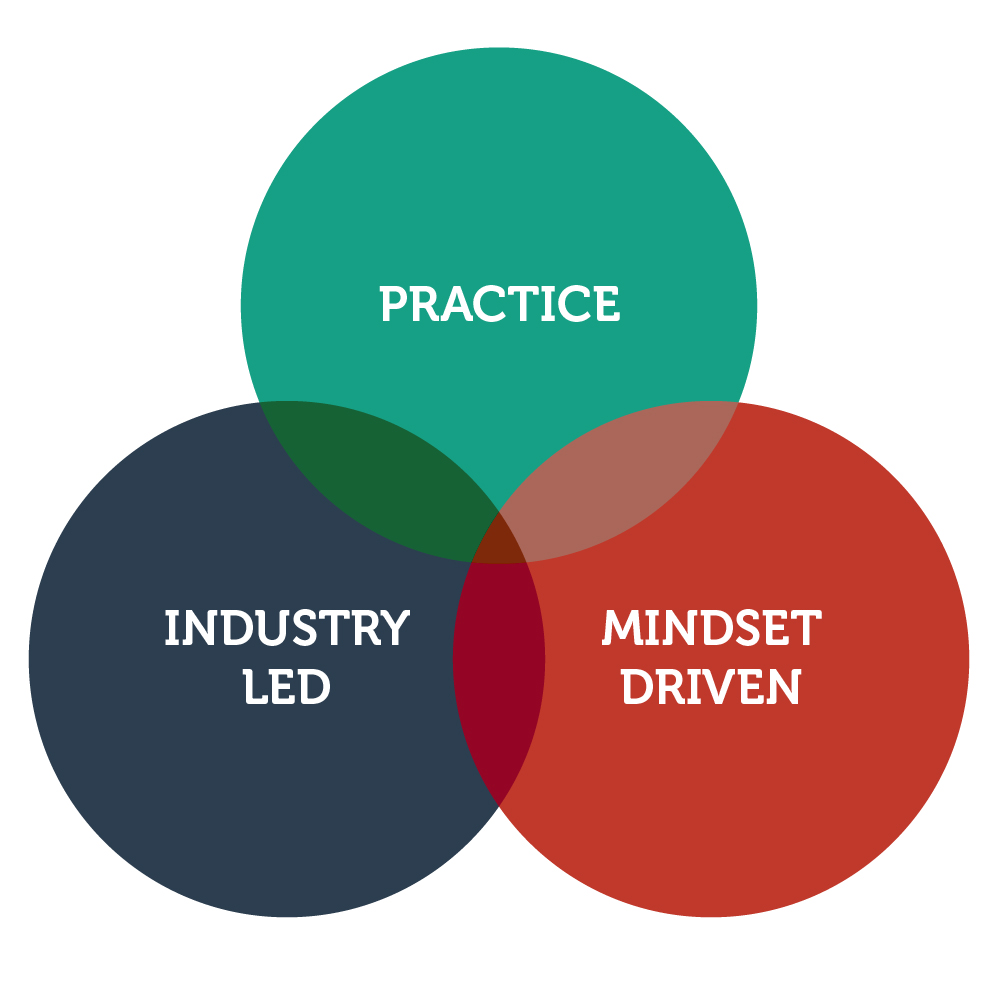On the 23rd January, Janet McHardy, Sinead Murphy and I headed to Academy Xi to listen, learn and discuss, prompted by the question ‘how might learning design promote innovation?’ The session was facilitated by Zoe Fitzgerald and included presentations from Frank Guzman, General Manager of Academy Xi and Simon Kavanagh, International Manager of Kaos.
After an entertaining warm-up activity, Guzman pointed to the learning design approach used at Academy Xi and his thoughts on learning design that promotes innovation.

Guzman reminded us that tools and theory were only a small part of the equation. These are constantly changing. Rather, the focus should be on the mindset to understand why we use tools or processes. Understanding the ‘why’ behind the ‘doing’.
Understanding why enables problem solving. We don’t always know what the solution will be but working through the problem is an important step. A key part of this is looking at how people navigate ambiguity.
Some may be a little resistant and want to focus on technology and processes, however it is up to our educators to provide evidence to convince them that just learning the technological skills is not the driver.
Kavanagh opened his presentation with the quote:
“Life isn’t about finding yourself:
Life is about creating yourself”
George Bernard Shaw
Kavanagh explained that at Kaospilots learning design agency, the focus was not on making people fit into the future but allowing them to create that future. Similar to Guzman, Kavanagh talked about the need to learn how to navigate ambiguity and the unknown. He looked at the space between chaos and order as the space to co-create the future.
Building on from Guzman, Kavanagh looked at the need to turn ambiguity into solutions that generate dollars. Again, the need for problem-solving and analytical skills was at the forefront. He focussed on the disruptors and the need to go through iterations and trial and error, which must be supported by a culture of continuous learning and experimentation.
Kavanagh talked about encouraging students to focus on the need and to encourage them to explore those needs. To encourage students who come up with ideas that seem impossible, to let them try. He stated that they will soon work out what is possible and what isn’t. And, what if they do achieve it? Finally, Kavanagh wrapped up by saying that education should be exciting, and we should be taking our students on an adventure.
The Q&A session that followed the presentations was robust. At first, it focussed on the complexities of change in large organisations. Guzman stated that it was important to understand what success looks like for the decision makers and to communicate it in their language. Kavanagh echoed this, further stating that there is a strong need to define and agree on what success looks like and what it will mean. This includes creating a culture that allows mistakes.
Further discussion ensued on the topic of teaching mindsets over skills. Guzman reminded everyone that skills are a means to an end, but mindsets allow students to understand how things work. Kavanagh followed stating that attitudes and mindsets are equally as important as skills and knowledge. More and more companies are looking for experience-based learning, as mindsets are the foundations that companies are built on.
During his presentation Kavanagh presented a leadership model that included spending 20% of your time leading peers, 5% of your time leading subordinates, 50% of your time leading yourself and 25% of you time leading your superiors. In the Q&A, discussion also focused on the complexities of leading your leader. Kavanagh addressed this by saying that to lead your leader, the leader has to be open to it. Leadership must support the growth of a culture that allows for feedback and people have to be trained on how to give that feedback.
Overall, my key takeaways from the session were that innovation is a mindset. An openness to growth and acceptance of trial and error are essential ingredients. Many students are keen to learn the tools, but it is the ability to give and receive feedback and navigate through ambiguity and complexity that really drives innovation.